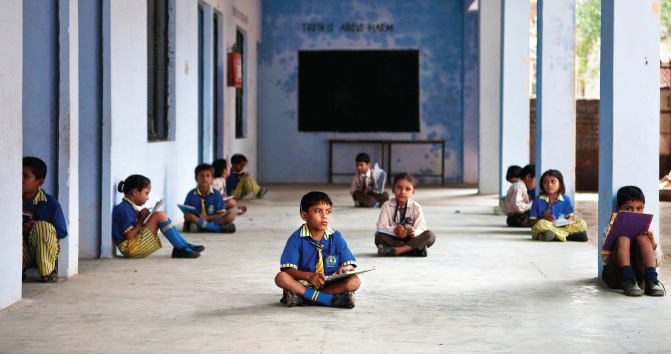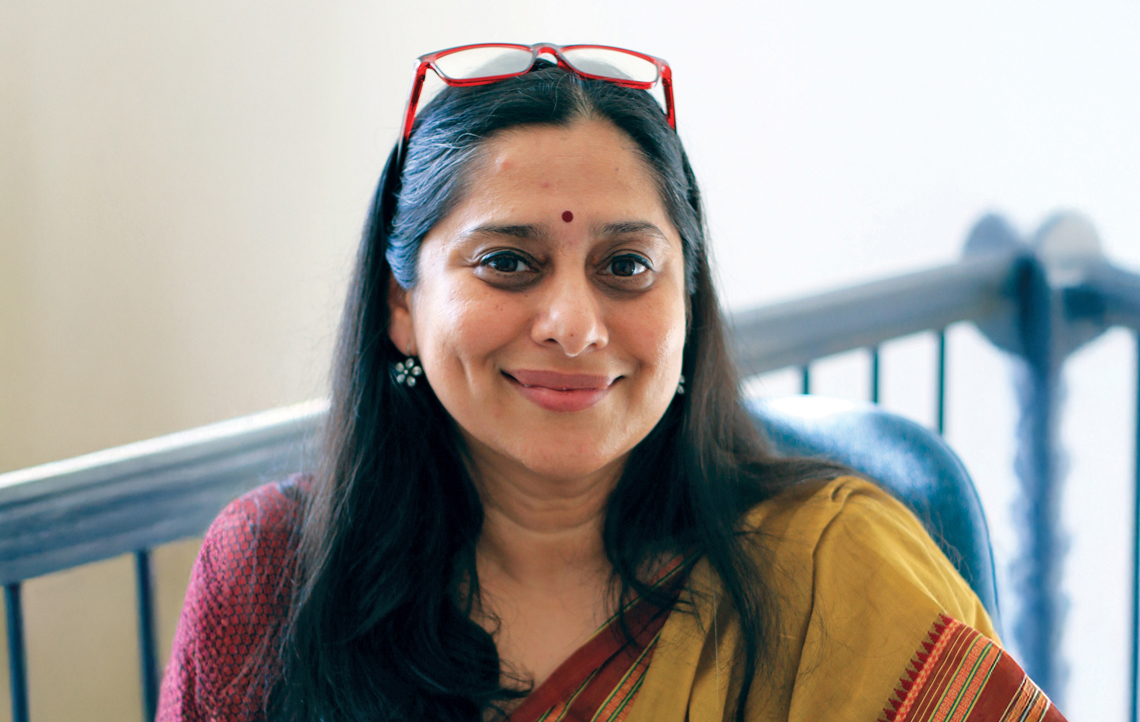‘We need deeper education reforms’
Education and child rights have been the principal themes of the research and advocacy Archana Mehendale has immersed herself in across a stellar career spanning more than three decades. A social worker by training, with a doctorate from the National Law School of India University, Bengaluru, Ms Mehendale has contributed to the drafting of several laws and policies while being extensively involved with academia and the nongovernmental sector.
Currently an adjunct professor at the National Institute of Advanced Studies, Bengaluru, Ms Mehendale speaks with Christabelle Noronha about education in India and the question of quality it is grappling with, and why children should be at the centre of the country’s development agenda. Excerpts from the interview:
How has India fared in the fundamentals of education — foundational literacy, numeracy and learning outcomes — over the 25 years you have spent studying and researching the subject?
India’s primary challenge since independence has been ensuring universal access to education. Most early policies and programmes were rightly centred on bringing girls, children with disabilities, and those from the socially marginalised communities into the school system. However, ‘quality’ as an expressed policy priority took a backseat.
It wasn’t until the 1990s that the conversation began to shift towards learning outcomes. Over the past decade in particular, there’s been a stronger focus on what students are actually learning, not just whether they are enrolled. This mirrors a global trend, and in India, the release of the Annual Status of Education Report and the National Achievement Survey sharpened the discourse. These reports exposed a sobering reality: a large number of children are not learning at grade-appropriate levels.
While access to education has improved dramatically, quality remains a serious challenge. That said, quality is an inherently complex and subjective concept. Over-reliance on testing can create unintended consequences, such as blaming teachers who are often operating within under-resourced systems. What we need are deeper reforms, looking into every aspect of our large and complex education system.
Both the central and state governments have introduced initiatives aimed at improving quality and have experimented with several approaches. However, there is a need to examine the evidence on what has worked and adopt promising practices. We must invest in continuous teacher training, give teachers professional autonomy, and ensure resource-rich, stimulating classroom environments.
And we can’t ignore early childhood education. Research consistently shows that early nutrition, stimulation and nurturing environments are foundational for future learning. Without addressing these, we risk leaving children behind before they even begin formal schooling.
We must invest in continuous teacher training, give teachers professional autonomy, and ensure resource-rich, stimulating classroom environments.”

Your most recent work is a white paper for the Tata Trusts on innovative financing in the education sector. What, in a nutshell, were your findings and recommendations?
There’s a growing curiosity around innovative financing in education, particularly ‘development impact bonds’ and outcome-based funding. While the field is still emerging in India, the Tata Trusts have played a significant role in laying some early groundwork through their partnerships with Social Finance India and the British Asian Trust.
Although the government will continue to be the largest funder of education, we also need to recognise that philanthropy and CSR [corporate social responsibility] are playing critical catalytic roles, especially in testing and scaling interventions aligned with national priorities.
Transitioning to an outcomes-based financing approach is not easy. Many nongovernmental organisations lack the readiness to operate at scale, whether in terms of proven models, monitoring and evaluation systems, or comfort with performance-linked funding. Building a robust and innovative financing ecosystem in India will require a strong pipeline of nonprofits with tested interventions, technical partners for legal support and data systems, and funders who see the value of outcome-based models.
At the same time, there is a need to invest in building the ecosystem — in terms of developing standardised contracts, designing pooled outcome funds, creating rate cards, and establishing efficient evaluation methodologies — to reduce the high transaction costs and make these models scalable.
The white paper talks about the fall in foreign aid for education in India. What has been the impact of this on the system, and how can the shortfall be covered?
I would not be too worried about the fall in foreign aid because it has always been a small fraction compared with public spending on education. What matters more is improving domestic resource mobilisation through tax reforms, better budgeting and more efficient and transparent public spending. Globally, that’s where the focus is shifting to. In India, we’re also seeing growing contributions from mandatory CSR and philanthropy, much of which is directed towards education. So, the overall funding landscape is evolving and it’s increasingly being driven by domestic priorities.
In the prickly matter of regulating education, what’s the balance a country like India should be aiming for?
There’s no doubt that India needs to review how it governs and regulates its education systems, particularly school education. This is one of the areas requiring comprehensive review and reform. There is a plethora of regulations; new norms have been added to the earlier ones and any private school would find it extremely difficult to navigate through this regulatory maze. Currently, there is a need to review state-specific legislation and affiliation norms, which not only vary widely but are also outdated or overly rigid.
Several of my former students over the years have aspired to start their own schools. But they have been discouraged by regulatory complexities, just like so many of those who run small, alternative schools. The difficult issue they have to encounter is the application of ‘public interest’ standards for opening new schools. These are restrictive, often protecting existing providers from competition and limiting parental choice.
One of the suggestions made is that regulatory norms should apply to government schools, not just to private schools. In principle, I agree with this suggestion because there is a need to strengthen government schools as well and hold them accountable to basic quality standards.
Learning is a complex process... It would be counterproductive to pin legal accountability on the production of learning outcomes.”
But the proposal to replace input-based norms under the Right to Education [RTE] Act with outcome-based regulation is somewhat flawed, in my view. The Act only lays out minimum standards: safe infrastructure, qualified teachers, reasonable class sizes, etc. These are non-negotiable and form the foundation for any learning to take place.
Preserving some of the basic norms is also mentioned in the National Education Policy, 2020. The problem with shifting legal accountability solely to student learning outcomes is determining who can be held responsible if students don’t achieve expected learning outcomes: would it be schools, teachers, children, parents or the ‘system’? Learning is a complex process and is unique to each learner. It would be counterproductive to pin legal accountability on the production of learning outcomes.
What about child rights, the other dominant theme of your research? How would you assess the progress there?
As you know, India has a large young population, and we’ve been proactive in ratifying key international treaties on children’s rights. But ratification alone does not ensure the protection of children; the real test lies in implementing these treaty standards. That requires developing strong policies, allocating sufficient resources, building systems for accountability, and taking action when violations occur.
Unfortunately, that’s where we continue to fall short. While most states have established commissions for the protection of child rights — and we have a national commission as well — many of these bodies lack the capacity and resources to fully deliver on their mandate.
Although we have made significant progress in terms of enacting legislation, particularly in areas such as child labour, juvenile justice, child protection and disabilities, the gap between law and practice remains wide. Child labour remains a persistent issue.
We often assume that if a child is in school, they are not working, but that’s far from true. Many children, especially from disadvantaged backgrounds, combine schooling with wage work. Yet prosecution rates for employers exploiting child labour remain extremely low.
Several children who don’t belong in the juvenile justice system end up entangled in it, causing tremendous hardships for them and their families. Also, children with disabilities continue to face barriers to accessibility and are frequently denied the right to an inclusive education.
Another critical issue is that of fragmentation. The responsibility for child rights is spread across multiple ministries, including women and child development, education, health, and social justice; this diffusion weakens accountability and hinders coordinated action. There’s still a long way to go. What we need is not just better laws, but well-resourced institutions, integrated governance and a firm political commitment to putting children at the centre of our development agenda.
How can organisations such as the Tata Trusts contribute to improving India’s education indices? And where is the need most acute?
Given the scale and complexity of the challenges we face, there’s a growing recognition among philanthropies of the need to align their priorities, collaborate, and work beyond silos. This shift towards collective action holds immense potential to amplify impact.
Philanthropies like the Tata Trusts have historically played a crucial role in enabling nonprofits to innovate, pilot new ideas and drive grassroots impact. But for that value to be fully realised, we must ensure that the evidence generated about what works, for whom, and under what conditions is widely shared. This knowledge should inform both government policy and civil society practice; otherwise, valuable insights risk being lost.
Equally important is the need to stay connected to the realities on the ground. While strategic alignment with national goals is important, philanthropies must also be willing to take risks and support emerging or underfunded areas that may not yet be mainstream. Listening to the voices from the field and responding to real, evolving needs is what will allow philanthropies to set new directions and become truly transformative since they operate all over India.
We often assume that if a child is in school, they are not working, but that’s far from true. Many children, especially from disadvantaged backgrounds, combine schooling with wage work.”
